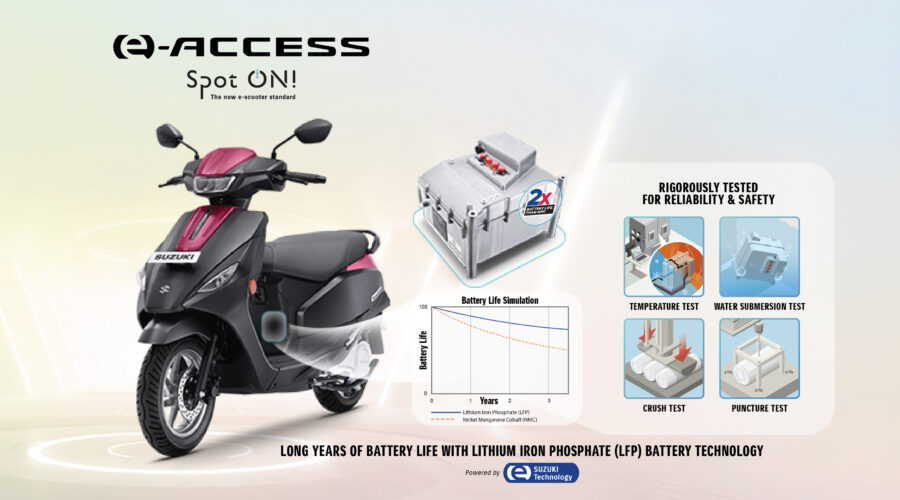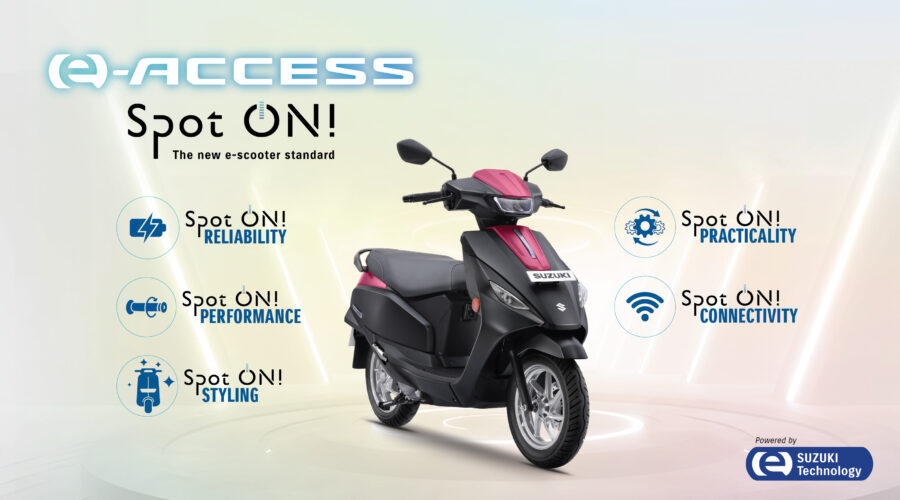The electric two-wheeler market in India has seen a significant evolution over the past few years. The transition from conventional Internal Combustion Engine (ICE) two-wheelers to electric ones has been marked by changing consumer priorities. What began as a race to push the limits of battery range is now shifting toward a more holistic view – one that includes quality, long-term durability, and reduced maintenance. The question is no longer just about “how far can it go?” but rather, “how long will it last, how reliable is it, and is it worth the investment in the long run?” And at the heart of all this lies the most important component of an EV – the battery. More than just a power source, the battery plays a defining role in cost of ownership, performance, and peace of mind.
Not all batteries are the same, and the choice of battery technology can have a major impact on performance, reliability, and long-term ownership. One such technology making its way into electric scooters is Lithium Iron Phosphate (LFP) and it’s gaining attention for all the right reasons.
Why Battery Composition Makes a Big Difference
Behind every electric scooter is a battery that defines not just how far it can go but how long it will last and how confidently it will perform. In India’s electric two-wheeler segment, Nickel Manganese Cobalt (NMC) batteries have been widely used, primarily due to their lightweight and high energy density. However, Lithium Iron Phosphate (LFP) batteries are now being adopted by some manufacturers.
What sets LFP apart is its longer cycle life – two to three times longer than that of NMC and it is lesser prone to thermal runaway, a condition that can lead to overheating or battery-related issues. Though LFP batteries are heavier and less energy-dense than NMC, their long-life span makes them a practical choice for riders who value durability over high peak range figures.
An example of this can be seen in Suzuki’s first electric scooter, Suzuki e-ACCESS, which uses LFP technology to support long-term, low-maintenance use. This battery stability allows riders to go about their daily commute with greater peace of mind.

Why a Long-Life Battery Matters
Battery replacement is one of the most expensive aspects of owning an electric vehicle. A scooter that initially offered 100 km of range might, after a few years, provide far less if the battery isn’t built to last, forcing the rider to consider replacement or live with range anxiety.
But with LFP, the range remains more stable over time, meaning rider can continue to ride with confidence for years without worrying about frequent replacements or sudden drops in performance.
Range Isn’t Everything. It’s About the Right Balance
It’s natural to compare electric scooters by looking at range. But longer range isn’t always the full story. LFP batteries are heavier due to low energy density. To extend range, the size of the battery must be increased which, in turn, adds more weight to the scooter. And in two-wheelers, weight directly affects drivability, handling and ride performance.
That’s why instead of pursuing maximum range, some manufacturers are focusing on balancing range and real-world performance. The Suzuki e-ACCESS, for example, delivers a real-world range of 95 km with a 3.1 kWh battery, based on the insight that most Indian riders travel about 30 km per day*. This setup allows a rider to comfortably commute for about three days between charges, without adding unnecessary bulk to the vehicle. It’s a considered decision, one that keeps Suzuki’s design philosophy of “run, turn, stop” performance intact while delivering all the convenience an urban rider needs.
Engineering That Prioritizes Quality
A good battery isn’t just about chemistry. It’s also about how it’s protected. In scooters like the Suzuki e-ACCESS, the battery is housed in a sturdy aluminium case and integrated into the frame, making it less susceptible to physical damage or fire-related incidents. It’s a design choice aimed at ensuring peace of mind in everyday use, without adding unnecessary weight. Such scooters and batteries also undergo rigorous testing process that covers everything from extreme heat and cold to drop, vibration, submersion, motor bench, crush and puncture tests, ensuring they can withstand real-world riding conditions.
What Lies Ahead for Urban Electric Mobility?
As electric scooters become more integrated into daily life, the benchmark for value is changing. It’s no longer just about range but building long-term confidence in EVs requires a broader view—one that accounts for reliability, ease of ownership, and real-world usability. Examples like the Suzuki e-ACCESS demonstrate how manufacturers are responding to these evolving expectations – designing electric two-wheelers that are not only efficient but built for the demands of everyday riding.
The journey isn’t about ignoring range; it’s about elevating other critical factors alongside it – so electric mobility becomes a choice not just for today, but for the long run.
* Source: Based on the SMIPL internal market research.

